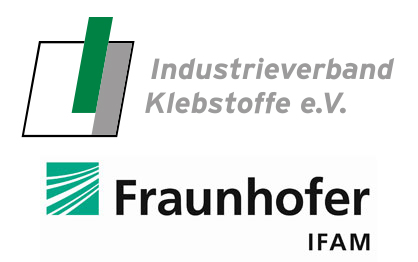1.2 Drawing up a list of requirements
Definition: List of requirements (specifications)
- Summary of the requirements on a product or part of a product (e. g. on a bonded joint and bonding process) that can be directly checked/tested.
- Desired criteria can also be included.
- Distinction between aspects which have to be fulfilled and those that can be fulfilled.
- Each step in the planning and production phases must proceed as per the specifications. The latter can be amended or expanded if necessary.
- All information and all amendments to the specifications must be documented in writing.
Drawing up the list of requirements (specifications) in consultation with all involved parties:

When drawing up a list of requirements, it is important to know the expected loads on the product or bonded joint as accurately as possible, in order to include these in the list of requirements.
These loads are not only those that occur during the usage phase but also those that arise in subsequent processing steps.
Loads on the product which have to be considered may include:
In addition to the loads on the products / bonded joints, the following aspects must also be considered:
- Workplace and environmental protection
- Substrates
- Adhesive
- Long-term stability
- Production
- Quality assurance measures
- Availability/costs
- …
Substrates:
- Material
- Storage conditions
- Suitability for the adhesive and surface treatment
- Geometry/size of the bonding area
- load limit of the substrates
- Manufacturing conditions for the substrates, as far as these affect the bonding properties
- …
Adhesive:
- Storage conditions
- Processing and hardening/curing conditions and times
- 1-C or 2-C processing
- Adhesive film thickness and width, position of the adhesive bead
- Adhesive viscosity (e. g. thin liquid or paste-like)
- Suitability for the adhesive and surface treatment
- Suitability for the expected loads; load limit of the adhesive
- …
Production:
- The “bonding” process requires cleanliness
- Ambient conditions and curing/hardening conditions
- Correct storage of the adhesive, substrates and all auxiliary materials
- Cycle times
- Method of application, i. e. manual or automated
- Position of the adhesive on the substrate
- Adhesive film thickness and width
- Suitable application equipment
- …
Workplace and environmental protection:
- Adhesives, on account of their composition, may be classified as hazardous materials or dangerous goods and in that case suitable protective measures must be taken.
- Statutory regulations must be observed, including those regarding:
- workplace protection (e. g. the drawing up of work instructions with specification of protective equipment to be used and medical guidance for employees)
- transport
- storage
- disposal
- the duty to use the adhesive with the lowest hazard potential in situations where several adhesives are equally suitable
- Information about the regulations on hazardous substances can be obtained from the safety data sheets that are made available by adhesive suppliers.
Long-term stability:
- Definition of the planned product lifetime taking into account the nature and duration of the relevant loads
- Specification and the carrying out of suitable ageing tests which optimally simulate real ageingprocesses
Quality assurance:
- Specification of quality assurance measures for the individual process steps
Supra-process quality assurance measures:
- Workforce training
- Documentation of quality data and processes; possible classification of individual products
- Inspection of tools and test equipment
- Management of defective products
- Communication
- Setting of responsibilities
- Work organisation
- Traceability
Availability/costs:
- Check and guarantee the availability of the adhesive.
- Calculate material costs and if necessary compare costs with other joining methods. Unused residues in containers and any necessary rinsing processes and costs for materials such as solvents, primers, cleaning cloths, etc. must be taken into account here.
- The container size must be appropriate for the amount of adhesive that is required.
- Draw up a list of specifications

- Preselect the adhesive + surface treatment
- Determine the load limit of the joint
- Optimise the joint until:load x safety factor < load limit



